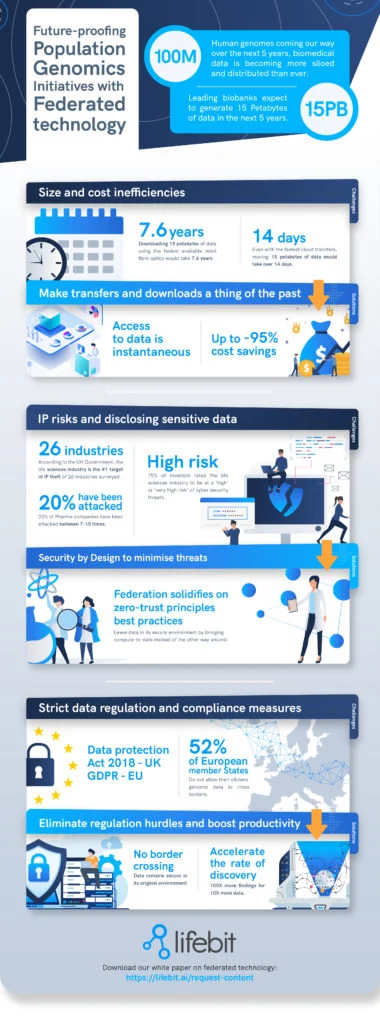Future-Proofing Population Genomics with Federated Technology

The Role of Federated Technology in Population Genomics
The advancement of technology has significantly influenced various scientific fields, including genomics. In recent years, the integration of federated technology has provided a pathway for researchers to analyze genomic data without compromising data privacy or security. Federated technology allows for data analysis to occur at the site of the data, rather than transferring sensitive information to a central database. This method not only protects individual privacy but also adheres to strict regulatory frameworks that govern data usage in healthcare.
For instance, consider a scenario where a hospital network collects genomic data from patients across various locations. Instead of shipping this data to a centralized server, federated technology enables researchers to run algorithms locally on each hospital’s servers. This decentralized approach fosters collaboration among institutions while maintaining compliance with regulations like HIPAA in the United States, which safeguards patient information.
Moreover, federated technology can enhance the diversity of genomic research. By involving multiple institutions and datasets, researchers can obtain a more comprehensive view of genetic variations across different populations. This can lead to better understanding and treatment of diseases that may manifest differently among diverse groups. In practice, this means that tailored treatments can be developed that consider the genetic backgrounds of various populations rather than relying on a one-size-fits-all model.
As we look to the future, the potential applications of federated technology in population genomics are vast. From improving public health responses to enabling personalized medicine, the advantages of this technology will likely grow as more organizations recognize its value. Researchers must continue to innovate and adapt federated systems to maximize their effectiveness while ensuring ethical and secure data usage.
Additionally, federated technology can empower community-based organizations and smaller research institutions that may not have the resources to conduct large-scale genomic studies. By participating in federated networks, these organizations can contribute valuable local data to larger studies, enhancing the overall quality and robustness of research findings while gaining access to cutting-edge analytical tools they would otherwise lack.
Another significant advantage of federated technology is its ability to facilitate real-time data analysis. For instance, during a public health crisis, such as a pandemic, researchers can quickly analyze genomic data from various regions to track mutations and understand the spread of a virus. This rapid response capability can save lives by informing public health decisions and interventions more effectively.
The implementation of federated technology in population genomics not only addresses privacy concerns but also mitigates the challenges posed by geographic boundaries. For example, European countries often face difficulties in sharing health data due to stringent data protection laws. By utilizing federated technology, these countries can collaborate on genomic research without risking non-compliance with local laws, thus fostering international cooperation in the field of genomics.
Organisations of all sizes turn to the extensive knowledge bases generated by national population genomics initiatives as they amass a multitude of clinical, omics and phenotypic data from diverse participants. The role of federated technology in population genomics is becoming increasingly important.
A fundamental challenge for researchers lies in accessing these knowledge bases as the data is subject to strict national regulatory frameworks. Data is restricted from leaving secure environments, making large-scale genomic data migration unfeasible and leaving us with extensive data silos.
In conclusion, federated technology plays a crucial role in transforming the landscape of population genomics. By breaking down barriers to data access while maintaining compliance with regulatory frameworks, this technology fosters collaboration and innovation in genomic research. As the field continues to evolve, leveraging federated technology in population genomics will be pivotal for accelerating discoveries that can lead to improved health outcomes for diverse populations.
Implementing federated technology in population genomics not only facilitates research but also aligns with the ethical considerations of data handling. As we embrace this approach, it is essential to prioritize transparency, community engagement, and the responsible use of genomic data. The future of genomics rests on our ability to harness the power of federated technology in population genomics.


